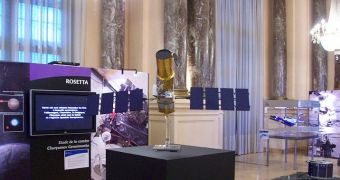European astronomers announced that the COnvection ROtation and planetary Transits (CoRoT) satellite was able to identify 10 new extrasolar planets, putting the total count reached by experts around the world to more than 560.
All of the exoplanets that spacecraft detected have already been confirmed by independent observations using other telescopes, researchers handling the mission announced on June 14, at the Second CoRoT Symposium, in Marseille, France.
Experts say that only gas giants – similar to Saturn and Jupiter in mass and size – were identified. The objects however include two Neptune-like objects, which will very probably be studied in depth during follow-up studies.
CoRoT mission managers say that the new discoveries put the number of known, verified exoplanets to 565, as of June 14. There are however some 1,235 candidates, all of which were proposed by scientists operating the NASA Kepler Telescope.
Both spacecraft have exactly the same objective – finding alien worlds that resemble Earth as much as possible. CoRot is a joint effort between the European Space Agency (ESA) and the French space agency (CNES), but also includes other international partners.
“Ever since the early days of exoplanet astronomy, we’ve been amazed by the variety of planets that have been discovered: gaseous giants larger than Jupiter and smaller, rocky bodies, down to masses comparable to the Earth’s,” Malcolm Fridlund said.
The expert, an ESA project scientist for the CoRoT mission, made the announcement in a statement delivered to astronomers gathered at the meeting, Space reports.
“The new set of 10 planets that we announce today are no exception [to the rule of tremendous diversity governing exoplanets thus far], exhibiting as they do a rich list of very interesting properties,” he went on to say.
“Although the study of exoplanets is relatively young, we have already reached a stage where we can characterize the details of worlds orbiting other stars, and CoRoT is making a crucial contribution to this field,” the astronomer said in his statement.
“With hundreds of systems observed to date, we no longer have to worry about 'taming the beasts' and we can dedicate our efforts to the 'zoology' of exoplanets, which is enormously enhancing our knowledge about planetary systems,” he concluded.
The first studies to successfully detect exoplanets were conducted around 20 years ago. Since then, scanning methods have improved considerably, and increasingly large numbers of planets are being discovered every year.

 14 DAY TRIAL //
14 DAY TRIAL //